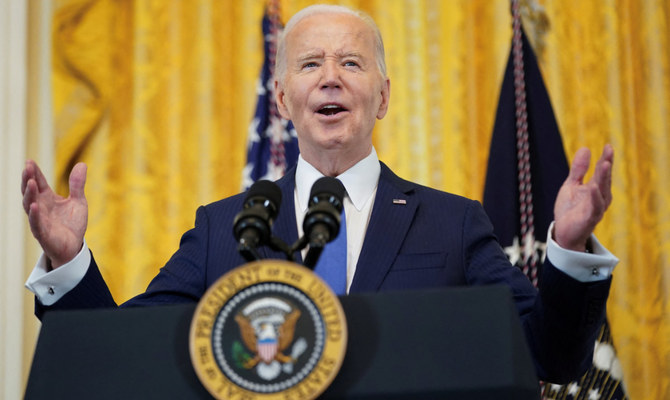
Former US senator and vice president Joe Biden said this week that “the jury is still out” as to whether he will run for the White House in 2020. Biden is the early favorite to win his party’s nomination, despite already being 75 years of age, in what could be the first ever clash of septuagenarian candidates in US history, should Donald Trump seek re-election.
Although general election day remains more than two-and-a-half years away, Biden’s comment is only the latest sign that the Democrat field is beginning to mobilize. In the event Biden decides to run, he will be a formidable candidate, but he potentially faces a significant field for his party’s nomination.
Among the potential other contenders for the Democrat crown are Sens. Bernie Sanders, Kamala Harris, Elizabeth Warren, Kirsten Gillibrand, Cory Booker, Tim Kaine and Amy Klobuchar. Outside of the Senate, potential runners include New York Governor Andrew Cuomo right through to actress and TV celebrity Oprah Winfrey and Facebook CEO Mark Zuckerberg. While it is widely presumed Hillary Clinton, the 2016 Democratic presidential nominee, will not run again, she has not categorically confirmed this.
While the Democrat race is therefore fluid, Biden (who would in 2020 be the oldest presidential nominee in US history) may yet emerge as the firm favorite to become his party"s standard bearer. In part, this is because the former vice president"s age would be at least partially neutralized by running against Trump, who is only four years younger and who appears less fit.
By numerous benchmarks, Biden has multiple key advantages against other Democrats — if his good health remains — despite his age. In January, for instance, a poll of Democrat identifiers found him the most popular potential 2020 candidate, with Sanders, Winfrey and Warren behind him.
The past few decades of US political history indicates that the victor in nomination contests for both major parties frequently leads national polls of party identifiers on the eve of the first presidential nomination ballot, traditionally in Iowa, and also raises more campaign finance than any other candidate in the 12 months prior to election year.
From 1980 to 2016, for instance, the eventual nominee in around half the Democrat and Republican nomination races contested (that is, in which there was more than one candidate) was the early frontrunner by both of these two measures. This was true of Democrat Clinton in 2016; George W. Bush, the Republican candidate in 2000; Al Gore, the Democrat nominee in 2000; Bob Dole, the Republican candidate in 1996; Bill Clinton, the Democrat nominee in 1992; George H.W. Bush, the Republican candidate in 1988 and 1992; Walter Mondale, the Democrat nominee in 1984; and Jimmy Carter, the Democrat candidate in 1980.
By numerous benchmarks, Biden has multiple key advantages against other Democrats — if his good health remains — despite his age. In January, for instance, a poll of Democrat identifiers found him the most popular potential 2020 candidate, with Sanders, Winfrey and Warren behind him.
Andrew Hammond
Moreover, in at least four partial exceptions to this pattern, the eventual presidential nominee led the rest of the field on one of the two measures. This was true of Republican Trump in 2016, Republican Mitt Romney in 2012, Democrat Michael Dukakis in 1988, and Republican Ronald Reagan in 1980.
For instance, in the race for the 2016 Republican nomination, Trump led a majority of national polls of Republican identifiers from summer 2015 into 2016. While Trump was not the leading fundraiser from external donations amongst the Republican field, he was well positioned on the money side of the ledger because the billionaire self-financed much of his campaign before becoming the official Republican nominee in July 2016.
By contrast, the 2012 Republican nomination race saw Romney as the leading fundraiser. However, he sometimes trailed or was tied in national polls of party identifiers to Newt Gingrich immediately prior to the 2012 Iowa ballot.
On both the fundraising and national poll measures, Biden (should he run) could become clear favorite for the Democrats in 2020. Indeed, so much so that some other potentially first-class candidates may decide not to even enter the race.
Presuming Trump seeks re-election and wins the 2020 Republican nomination, which would be likely but by no means certain, he could face a very tough November general election race against Biden or whoever the eventual Democrat nominee is. One of the key factors that will influence the latter party’s prospects of defeating the Republicans will be whether, and how quickly, it can unite around its own nominee given the potentially large amount of contenders.
After the policy and personal controversies from Trump being in the White House, many Democratic operatives will be keen to avoid a bruising, introspective and drawn-out contest that exposes significant intra-party division to the national electorate, as happened in 2016. Then the contest between Hillary Clinton and Sanders, in particular, saw key differences opening up, which helped contribute to the party losing an election against Trump that was potentially winnable given the tight margins of victory for the now-president in multiple states.
While the circumstances of 2020 will be different from 2016, it is nonetheless the case that another divisive Democratic nomination contest would probably only benefit Trump if he is the Republican nominee again. Indeed, should Trump easily emerge as the Republican nominee in 2020, this may potentially prove a tipping point in another very tight general election contest.
Andrew Hammond is an Associate at LSE IDEAS at the London School of Economics












